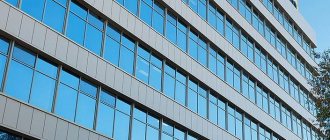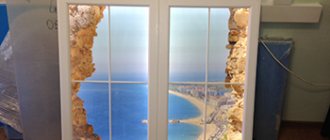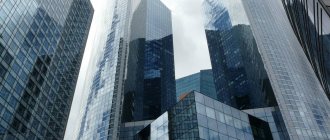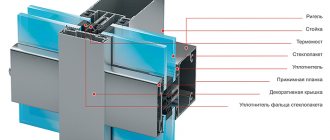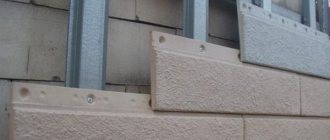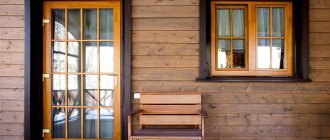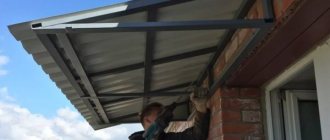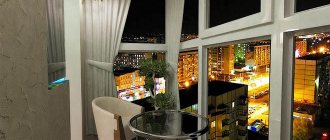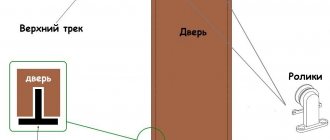Stained glass windows have been used since ancient times, and they are intended to decorate facades. With the help of modern technologies, bright, unusual and unique stained glass facade systems are formed. They are distinguished not only by their beautiful appearance, but also by their versatility and practicality. They are represented by structures made of a frame and numerous cells that transmit light. It is fixed to the slabs in the opening of buildings with a profile system. Translucent systems not only perform a decorative function, but also provide heat conservation and also transmit a lot of light.
The concept of stained glass facade system
The facade from the stained glass system is created using translucent structures that consist of a glass sheet. Therefore, beautiful designs with different shapes and dimensions are obtained. Such facades are used by architects and designers who want to create a unique composition that belongs to some original style.
When installing the system, post-transom structures are used, which allow performing different types of construction work:
- glazing of the facade of a building or some part of it;
- design of buildings using original structures that are radial, straight or curved;
- addition of the facade with canopies or balconies.
The basis of the system is crossbars that are fixed horizontally, as well as vertical posts. The advantages of using stained glass systems for building facades include:
- elegant appearance;
- high light transmittance;
- visual increase in space in apartments or offices;
- providing additional ventilation;
- the ability to create designs with different colors and shapes;
- high practicality;
- reliability and tightness of systems;
- long service life exceeding 50 years.
Attention! Glazing is possible for large facades, and installation is carried out at any time of the year for a short period.
Another significant advantage is the environmental safety of the structures. They are resistant to freezing or fire.
Types of stained glass
Aluminum systems designed for stained glass facades are available in four varieties:
- Post-transom system. It includes a support post, as well as crossbars equipped with special grooves. Due to their presence, additional ventilation is provided, with the help of which condensate is quickly removed from the system. The frame is fixed on the inside, and the stained glass windows are fixed using a clamping profile. To make the structure attractive, overlays of different colors and shapes are used. This system is attractive, easy to create and inexpensive compared to other varieties.
- Spider room. In it, translucent stained glass windows are fixed using the point method, for which spider-shaped brackets are used. Since gaps appear at the joints, they are filled with silicone sealant. To create a structure you have to spend a lot of time and money.
- Structural system. It is formed using double-glazed windows, which are fixed to the frame support using glue. This installation method ensures a beautiful facade, since there are no external and unattractive seams. An increase in thermal insulation and sound insulation parameters is guaranteed, and the products cope well with static loads.
- Semi-structural. It differs from the previous version only in the use of special overlays, presented in the form of glazing beads. They are located not only on horizontal, but also on vertical racks.
When creating any design, aluminum profiles are used, which in production conditions are processed by specialized devices. Glass blanks are adjusted, drilled, tinted or laminated before use. All parts are assembled into a single structure, after which they are supplemented with a frame, decorative elements or durable fittings.
Areas of use
Ventilated facades represented by stained glass systems are used in various fields. This is due to its attractive appearance and low weight. Installation is easy and quick. The systems can withstand heavy loads, are reliable and durable, and you don’t have to spend a lot of money to create them.
Attention! With the help of stained glass systems, a visual expansion of the space inside the premises is ensured, and a large amount of light enters the rooms.
Due to these advantages, designs are used in the following areas:
- shopping center design;
- design of exhibition complexes, sports facilities or concert halls;
- decoration of airports, hotels or other public institutions;
- creating bright showcases, winter gardens or greenhouses;
- formation of terraces, balconies or verandas;
- dividing the common space in the office with stained glass partitions, which allows you to zone the room, but at the same time ensures that each desk receives natural light.
Due to their versatility, such systems are popular and reliable.
Aluminum
They are usually used to create facade glazing. This is due to the use of reliable and durable aluminum frames.
Glass
They are not equipped with any visible frames, so they have an unusually attractive appearance. Used to create beautiful partitions or showcases.
What is stained glass: colored or patterned glass
Monotonous colored glass is much cheaper than colored glass or mosaic. But monotonous glass on a stained glass window is more attractive. Colored or mosaic glass is better suited for office and shopping centers, but for residential buildings, definitely only monotone glass. Moreover, it is much cheaper than mosaic, easier to install, does not require a designer, and the developer can independently select the design for his specific façade.
As an option, you can use a colored mosaic or a ready-made panoramic drawing. This is excellent advertising - because the facade of the house can be seen from afar. The only question is, won’t drivers be indignant if they are blinded by narrowly focused rays of the sun or if their attention is distracted by the beautiful facade of a modern building?
Types of stained glass systems
Aluminum systems differ in design, purpose and characteristics. But as a standard, there are “cold” and “warm” varieties. Even fire protection systems, which have excellent fire protection, are popular.
“Warm” aluminum profile
When creating it, special thermal insulating inserts made from polyamide are used. They prevent the formation of cold bridges. Thanks to this design, the high thermal conductivity that aluminum has is leveled out. Therefore, even if the facade is completely glazed, heat loss does not increase. An additional advantage is the improvement of sound insulation properties.
“Warm” profiles are used for glazing residential premises or offices, as well as balconies or winter gardens.
"Cold" profile
It is ideal for buildings that do not need to retain heat. It does not have thermal inserts, but the advantages of its use include light weight, low price and speed of installation.
Typically, this profile is used for glazing warehouses or in the process of creating partitions installed in offices.
Advantages and disadvantages
Stained glass glazing of a window, balcony or wall has a number of economically sound advantages:
- efficiency. Translucent filling increases the time of natural light in the room and reduces energy consumption. Thanks to the minimum number of joints, the glass wall receives additional strength and resistance to static and wind loads without additional items in the project estimate;
- attractive appearance of the building. Large windows look more attractive than their small-format counterparts from the street side. The room becomes brighter and more spacious;
- fire resistance. Stained glass windows meet the fire safety requirements contained in the laws of the Russian Federation, by-laws of departments, government regulations and the leadership of the Moscow City Hall;
- environmental friendliness. Glass, steel, aluminum do not contain harmful components, do not emit harmful ethereal substances, are easily processed as secondary raw materials, and do not require special disposal conditions;
- increased visibility. The room with stained glass windows offers a wide view of the surrounding space. The balcony can be turned into an observation deck;
- a large selection of design solutions for creating load-bearing frames, arranging transparent inserts (triplex, tempered glass, blind panels made of PVC, metals, polymers).
The disadvantages include:
- glazing creates a large load on load-bearing elements (walls, foundation), so ideally the translucent component should be taken into account when drawing up the overall design of the building;
- high price, including the cost of the profile system, large-format transparent panels, installation specifics.
Installation of stained glass windows from aluminum
Thanks to the use of panoramic glazing, a beautiful appearance of the building is created, and a comfortable environment is created in the premises themselves. The installation process is not considered a complex process, but it is carried out by experienced craftsmen. The procedure is divided into stages:
- Measurements to determine the parameters and dimensions of the structure. This stage must be taken seriously, since the safety of using the stained glass system depends on the measurement results. Therefore, measurements are carried out using modern measuring devices.
- Installation of aluminum frame. During work, the strength of fixation of individual parts and the evenness of installation of each part are constantly checked.
- Painting metal elements. Paint not only protects against rust, but also decorates the structure.
- Installation of translucent parts. They are made to order, for which the measurement results are taken into account.
- Fixation of fittings that are correctly adjusted and decorated if necessary.
Attention! Correct installation is carried out only with the help of modern equipment, which allows you to create a safe system.
Advantages of stained glass glazing
- Economical.
Stained glass glazing is cheaper than many other types of facade, is installed quickly and does not require special maintenance costs. In addition, lighting costs are reduced, and when installing a “warm” profile, heating costs are also reduced.
- Durability.
The service life of an aluminum profile can reach seventy years or more. Aluminum is not subject to corrosion and is resistant to external factors.
- Strength.
The design features and strength of the aluminum itself allow the stained glass system to withstand not only static loads, but also impacts of up to 80 kilograms. And installing armored or shockproof glass will protect the stained glass system from accidental or intentional damage.
- Good lighting.
High light transmittance allows for good illumination of all rooms with natural light.
- Easy care.
Caring for stained glass systems does not require much effort. And if necessary, you can very easily make repairs.
- Environmentally friendly.
In the production and installation of systems, only safe, non-toxic materials that are completely safe for human health are used.
- Insulation.
The “warm” profile protects against noise no worse than a regular facade, and the tightness of the structure allows you to keep the room warm or, on the contrary, protect from the summer heat.
- Fire safety.
Stained glass is not exposed to high temperatures, does not burn and does not emit harmful substances when heated. They are odorless and suitable for installation in residential and public areas.
Fire cutting
To create such a cut, a sheet of steel is selected. It is fixed to the glazing system and to the wall of the building. The cut-out is mounted in a horizontal position and is intended to protect the building from fire spreading to the upper floors from the lower tiers.
Building owners rarely use this addition as it slightly detracts from the appearance of the building. Contractors often refuse to carry out such orders because it increases labor costs. Installation is allowed only if the cutting is taken into account during the glazing design process.
Additionally, a fire-resistant profile is used to protect against fire, and an irrigation system is installed for all parts of the system.
Cost of stained glass glazing
The cost of stained glass glazing can vary over a fairly wide range. They depend on the selected glazing system, types of double-glazed windows, scale of glazing, type of building, complexity of work, fastening system, presence of opening elements and other parameters.
The same fasteners can differ in cost several times. Our company has its own production, which allows us to guarantee optimal prices for all structural elements without loss of quality. We carry out a full range of work to guarantee our clients favorable conditions without the need for additional costs for the services of other companies.
Manufacturers and prices
There are many companies offering stained glass systems for facades. The price of the structure depends on the size of the building, the complexity of the chosen forms, as well as the materials used. Therefore, it is calculated individually in each situation. The cost is influenced by installation rules, the choice of “warm” or “cold” glazing, the reputation of the manufacturing company, the characteristics of the entire structure and the features of the glass.
Attention! Even fittings significantly increase the cost of glazing if you choose high-quality products from expensive materials.
Among the most popular manufacturers, KraMZ stands out. But not all customers prefer to use products from domestic manufacturers, so they require systems from foreign companies. Therefore, products from Alutech or Reiners organizations are selected. There are many brands on the market, but when choosing a design, it is important to remember the company’s reputation, the quality of the systems and other significant parameters. It is not recommended to focus solely on price.
Requirements for stained glass glazing of facades
for stained glass glazing of facades as for any other types of facades. Fire safety methods and regulatory documents for stained glass facades are the same as for a regular facade.
High-quality stained glass designs fully comply with all requirements and standards. Modern technologies make it possible, using only metal and glass, to transform any standard building into an architectural masterpiece that will significantly enhance the company's reputation, giving it a modern business image.
